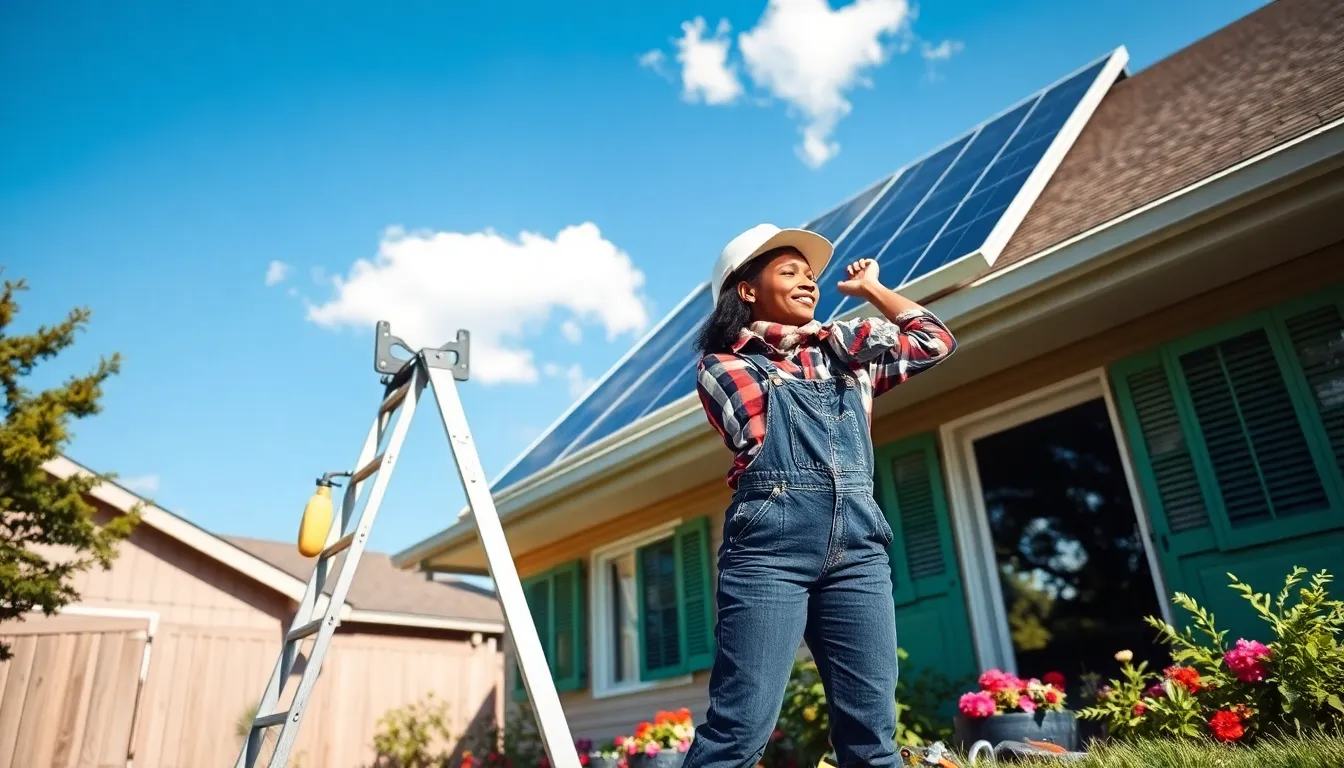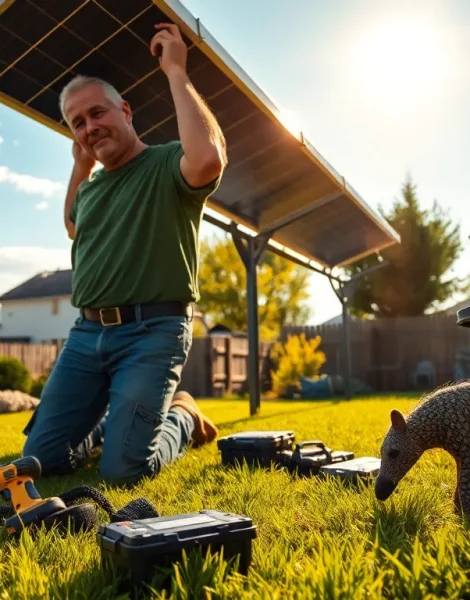In an era where sustainability takes precedence, integrating solar energy into homes through DIY installations has emerged as a practical solution. This approach not only minimizes reliance on fossil fuels but also allows homeowners to harness the sun’s energy while saving on energy bills. HomeRocket Realty brings together the concept of DIY solar energy systems and the unique role of the pangolin, an often-overlooked creature in discussions surrounding sustainable living. This article will investigate into the fundamentals of DIY solar energy systems, their benefits, and how the pangolin symbolizes a commitment to an eco-friendly lifestyle.
Table of Contents
ToggleUnderstanding DIY Solar Energy Systems

DIY solar energy systems allow homeowners to take control of their energy consumption and reduce their carbon footprint. A typical DIY solar setup involves solar panels, batteries for energy storage, an inverter to convert DC power to AC power, and various mounting systems.
Understanding the components can empower individuals to make informed decisions about their energy projects.
There are primarily two types of DIY solar systems:
- Grid-tied systems: These systems rely on the electrical grid to balance energy production and demand. They enable homeowners to sell excess energy back to the grid through net metering.
- Off-grid systems: These setups operate independently, using batteries to store energy for use when sunlight is not available. They require careful planning to ensure adequate energy provision year-round.
Investing in a DIY solar system not only decreases dependence on traditional energy sources but also promotes a sense of ownership in energy production. Besides, the rising cost of electricity urges many to explore alternative energy sources, making DIY solar installations increasingly popular.
Benefits of DIY Solar Installations
DIY solar installations come with numerous advantages that make them appealing to homeowners and environmentally conscious individuals alike.
Cost Savings: One of the most notable benefits of DIY installations is the significant cost savings. By opting to install solar panels themselves, homeowners can avoid labor costs that come with professional installations. With the right tools and information, the investment can be quickly recouped through lower electricity bills and potential tax incentives.
Customization: A DIY solar project allows for customization according to the homeowner’s specific needs and property layout. This enables the installation of solar panels in the most advantageous positions to maximize sunlight capture.
Empowerment and Knowledge: Taking on a DIY solar project provides an opportunity for homeowners to learn about solar energy systems and gain practical skills. This understanding fosters a deeper appreciation for renewable energy technologies.
Environmental Impact: By reducing reliance on fossil fuels, DIY solar installations contribute significantly to environmental conservation efforts. Homeowners play a direct role in lowering greenhouse gas emissions, making a positive impact on the planet.
The Role of the Pangolin in Sustainable Living
The pangolin, often referred to as the world’s most trafficked mammal, represents a fascinating aspect of sustainable living. These unique creatures play a crucial role in maintaining healthy ecosystems, primarily by consuming ants and termites, which helps control pest populations.
The plight of the pangolin serves as a potent reminder of the importance of biodiversity and conservation. Supporting projects that protect pangolins and their habitats aligns closely with the principles of sustainable living. Homeowners adopting DIY solar solutions contribute to a broader green movement that supports not only individual households but also wildlife conservation efforts.
Also, the pangolin’s situation emphasizes the need for sustainable practices in all aspects of life. As individuals invest in renewable energy sources, they embrace principles that protect and preserve various species and their environments. Incorporating sustainable practices at home mirrors efforts to save species like pangolins, eventually fostering a more balanced ecosystem.
Steps to Create Your Own Solar Energy System
Creating a DIY solar energy system might seem daunting at first, but by following a structured approach, it becomes more manageable.
Choosing the Right Equipment for Your Solar Project
- Solar Panels: Select panels based on efficiency ratings and power needs. Monocrystalline panels typically offer the highest efficiency but may also come with a higher price tag.
- Batteries: Decide between lead-acid and lithium-ion batteries based on budget and space constraints. Lithium-ion batteries are more efficient but typically cost more upfront.
- Inverter: Choose an inverter that matches the system size and type. A sine wave inverter is recommended for household appliances to ensure compatibility.
- Mounting Equipment: Invest in durable mounting equipment that can withstand local weather conditions.
Installation Process for DIY Solar Panels
- Site Assessment: Evaluate the property to find the best location for solar panel installation, considering factors like shading and roof orientation.
- System Design: Prepare a design layout that includes the number of panels, battery placement, and wiring.
- Installation: Start with mounting the panels on the roof or ground frame. Connect the panels, inverter, and batteries according to the designed layout, ensuring all connections are secure and comply with local electrical codes.
- Testing: Once installed, test the system thoroughly to confirm everything is functioning correctly before relying on it for daily energy needs.
Maintenance and Troubleshooting Tips
Maintaining a DIY solar energy system is crucial for ensuring longevity and performance.
Regular Cleaning: Keeping solar panels clean enhances their efficiency. Dust, leaves, and bird droppings can block sunlight, so it’s advisable to clean them periodically. This could be done with a soft brush and mild detergent.
Monitoring Performance: Homeowners should monitor the performance of their solar panel system. This can be achieved with software applications that track output or through regular manual checks. If output falls below expectations, further investigation is warranted.
Troubleshooting Issues: Common issues may arise, such as inverter failure, battery problems, or faulty connections. Homeowners should familiarize themselves with the equipment manuals and troubleshooting guides to address minor problems, while professional help can be sought for major repairs.
Conclusion
Investing in a DIY solar energy system is an empowering step toward sustainable living. Not only does it offer financial savings and energy independence, but it also contributes to the preservation of our environment and biodiversity.
Embracing the spirit of the pangolin, working silently and effectively within its ecosystem, homeowners can create their energy systems that not only power their homes but also support the health of the planet. As the need for sustainable solutions grows, increasing awareness and participation in DIY solar projects will play a pivotal role in shaping a greener future.









